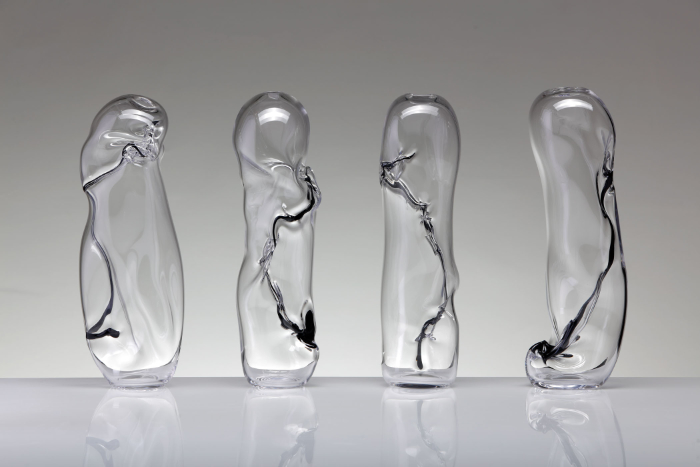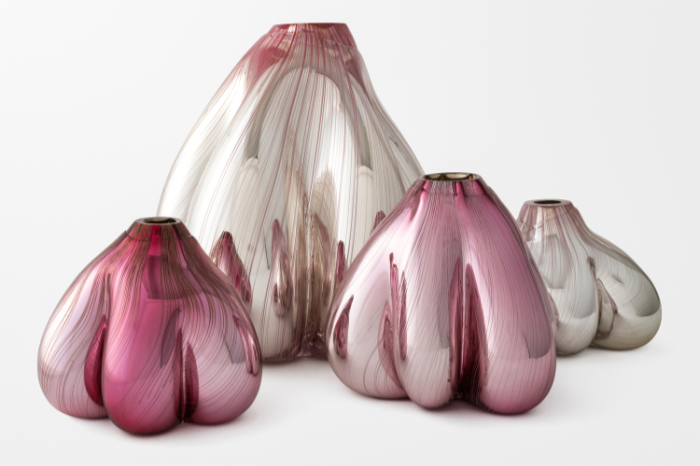
A cultural melting pot
George William Bell diverted from a path towards ceramics to a career in contemporary glass and his travels around the world – in particular to Scandinavia – have informed the development of his practice. Linda Banks finds out more.
What led you to start working with glass?
I was raised in a creative household, with both of my parents working as full time ceramicists. I was also on my way to becoming a ceramic artist myself, but during my time at Bath Spa University, I happened to venture down to Bath Aqua Glass for a demonstration of glassmaking. Whoever let me blow that bubble during the demo is to blame – I was hooked!
After finishing my degree in Ceramics, I applied for a job at the studio and never looked back. Since then, it has been a long, strange road of working and exhibiting, lecturing and demoing across Europe and the US.
Currently, I am delving deep into a new body of work exploring the natural fluidity of glass as a material during my time as long-term artist in residence at Monterey Glassworks, in California, US.

What glass techniques have you used and which do you prefer?
I use a wide array of techniques in order to achieve the fluid expressions within the objects I create. I would say that generally the idea leads and the technique is developed to match the idea. Having said that, I feel the basis of my process could be viewed as a combination of traditional Venetian cane technique, with an experimental Scandinavian approach to materiality.
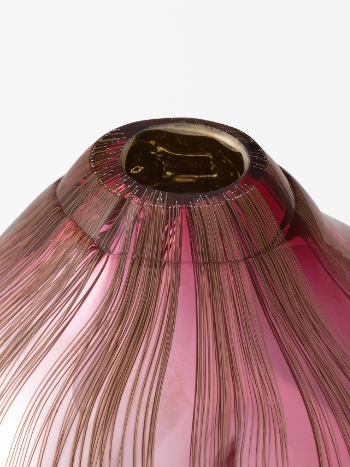
What is your creative approach? Do you draw your ideas out or dive straight in with the materials?
I see my creative process as a constant design investigation, where each object builds upon the material knowledge of the last. Since the focus of my work these days has been more of a freeform investigation into materiality, it is unusual for me to design the final object before its creation, but more likely to involve detailed notes and sketches of the processes or stages of development, which I will work through on the way to the final object.
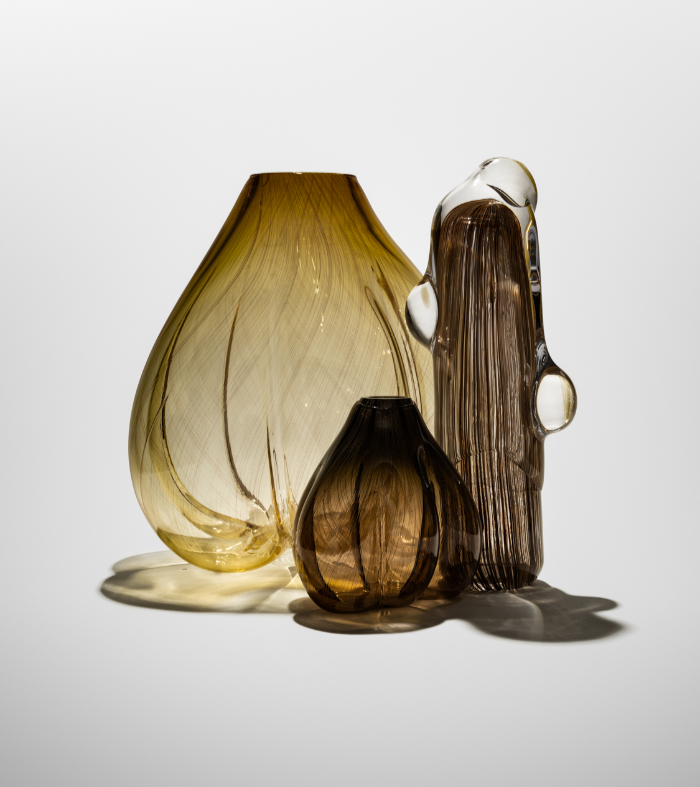
You have lived in different countries. How has this influenced your work?
I see my work as a cultural melting pot of expression and technique. From my first experiences of glass as a factory worker in the UK, to my many years as an artist and designer in Scandinavia, to my new life and career in the US, I have acquired a treasure trove of material perspective and traditional craft knowledge. Without a doubt, though, the possibility to learn the processes and design traditions of the Scandinavian glass industry has left a lasting impact on my approach as a maker, designer and artist.
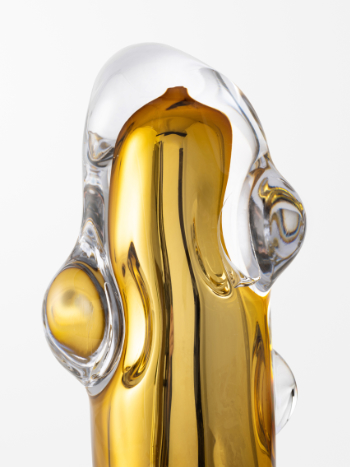
What message(s) do you want to convey through your art?
It is my hope that the objects I create encapsulate the material approach I have developed through a long-term dialogue with the natural fluid properties of glass. Rather than seeking to emulate a pre-existing structure or form shape, the works should be seen as captured moments of fluid abstraction. The resultant objects are an expression of the moment in which glass moves from a malleable, moving mass, in which all forms are possible, to a solid object with defined parameters.
What is your favourite tool or piece of equipment and why?
Recently I discovered that I can use various sizes of metal pipe fittings to create bubble rings within the glass lumps I add to my objects, creating, in some circumstances, a series of two or more. So, I am excited to continue experimenting with that.
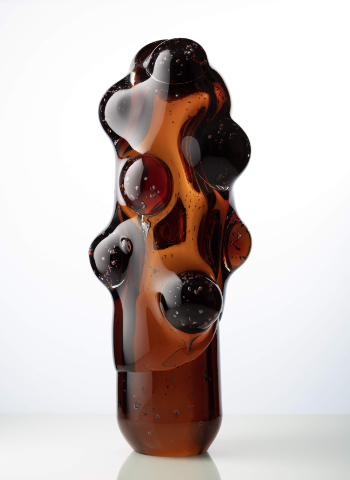
Do you have a favourite piece you have made? Why is it your favourite?
I think that the ‘Amorphous Form’ series, in which four glassmakers blow in unison to create one unified, anthropomorphic form, probably came the closest so far to the pure form of material expression I aim to work towards.
Here is the description of the objects and the process in New Glass Now 41, by Francesca Giubilei: “Bell’s object is not intended to represent anything; instead it gives shape to the orchestral work of four blowers. Each of the elements that make up the work is the result of one glassblower’s breath and movements, which combined freely and casually with the actions of others to create an unrepeatable and unique anthropomorphic object.”
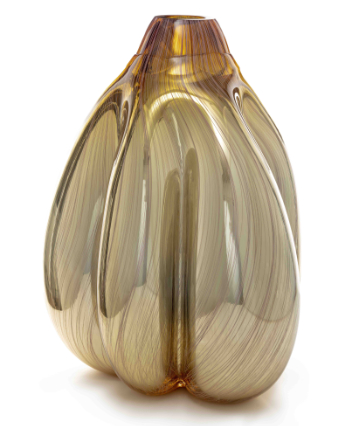
Where do you show and sell your work?
Currently my work is available through Chesterfield Gallery in New York, Vetri Gallery in Seattle and Galleri Montan in Copenhagen. I’m also currently exhibiting as part of a group show, ‘Studio Glass from Denmark’, at the Museum of Modern Glass in Rodental, Germany.
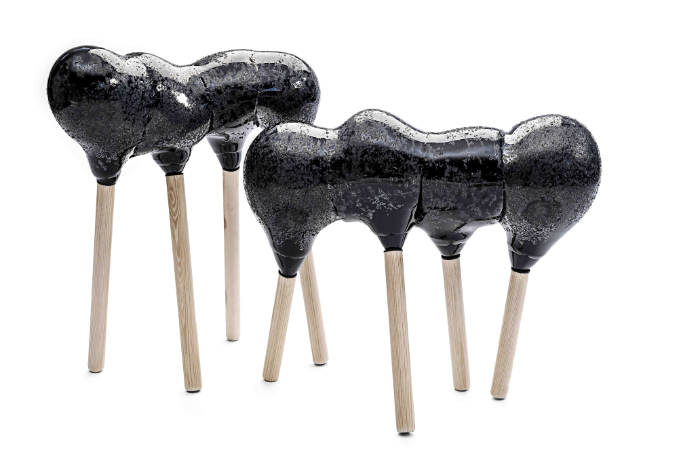
What advice would you give to someone starting out on a career in glass?
Forging a career in glass is not an easy road, but, as long as you can remain flexible and versatile, there will always be a place for you in this industry. Find a way to keep working in glass no matter what, and you will inevitably continue to grow personally and creatively. Eventually your skill and tenacity will be recognised and rewarded.
Do you have a career highlight?
My 2023 solo show in New York with Chesterfield Gallery felt like an important landmark in my career so far. Not only was it my first solo show in the US, but it also marked a new beginning for me after a few years of creative chaos and cancellation due to the pandemic.
Where is your glass practice heading next?
I hope to continue to further innovate a creative expression, which portrays my core values and personal material journey so far – working on projects and with people I believe in, who share my passion for material innovation within the realms of glassmaking.
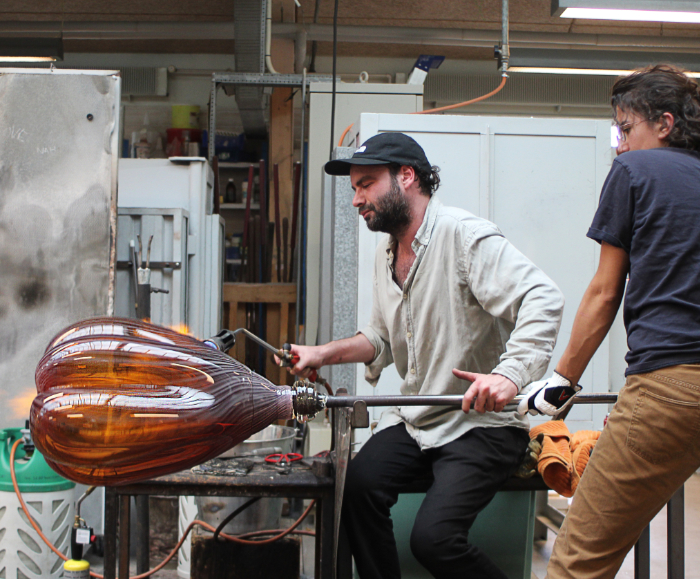
About the artist
George William Bell’s work stands on the fine line between fine art, craft and design, with material investigation and innovation at its core. His personal artistic exploration has entered a paradoxical paradigm in which craftsmanship and artistic intent work in collaboration with the possibilities inherent in self-governing form. Exploring autonomous, self-generative aesthetics, material possibilities come into being which hold the power of tactical form in flux.
- William Bell’s work looks to the future of the handmade object – a future in which boundaries are blurred and ingrained belief systems are challenged.
Bell’s work has been exhibited widely, featuring in numerous international exhibitions, including ‘New Glass Now’ at Corning Museum of Glass (New York), The European Award for Applied Arts (Mons, Belgium) as well as the ‘Glass is Tomorrows’ touring exhibition (Stockholm, Milan, London). He has received awards from Danske Kunsthåndværkere & Designere, Ung Svensk Form, and the Stanislav Libensky Award.
He is currently living and working in California, at Monterey Glassworks, where he continues to develop and refine his artistic practice.
Follow his personal artistic journey on Instagram @georgewilliambellstudio, and his design work through @inflatedesignstudio .
Main image: Amorphous Form Studies in Ruby (group). Photo: Joe Kramm.
